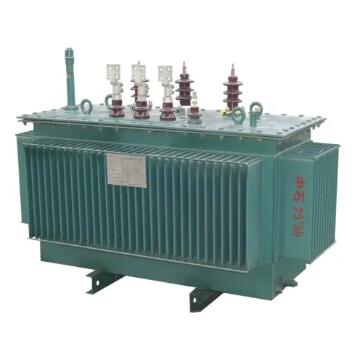Transforming the Future of Energy: Oil-Immersed Transformers with Amorphous Alloy
2023-10-17
Introduction
In the ever-evolving world of energy distribution and sustainability, technological advancements have paved the way for more efficient and environmentally friendly solutions. Among these innovations, Oil-Immersed Transformers with Amorphous Alloy cores stand out as a remarkable development. In this blog, we will explore the significance, features, and benefits of these transformers, and how they are transforming the energy landscape.
The Evolution of Transformers
Transformers have long been a cornerstone of electrical distribution systems, facilitating the transmission and distribution of electricity from power generation plants to homes and businesses. Traditional transformers typically featured cores made of silicon steel laminations. While effective, these transformers had certain limitations.
Enter Amorphous Alloy
Amorphous alloys, also known as metallic glasses, are a class of materials with a disordered atomic structure. When used in transformer cores, amorphous alloy materials offer several key advantages:
1. Reduced Core Losses: The non-crystalline structure of amorphous alloy cores significantly reduces core losses compared to traditional silicon steel cores. This results in higher energy efficiency and reduced operational costs.
2. Lower Noise Levels: Amorphous alloy transformers operate at lower magnetic flux densities, reducing the generation of audible noise during operation. This makes them ideal for use in urban areas or noise-sensitive environments.
3. Improved Energy Efficiency: Lower core losses translate into improved energy efficiency. Amorphous alloy transformers help reduce energy wastage, making them an environmentally responsible choice.
Features and Benefits
1. Energy Efficiency: The primary advantage of oil-immersed transformers with amorphous alloy cores is their outstanding energy efficiency. These transformers can achieve energy savings of up to 70% compared to traditional transformers, which is especially valuable in a world striving for reduced energy consumption.
2. Environmental Sustainability: Amorphous alloy transformers align with sustainability goals by reducing greenhouse gas emissions associated with power generation. Lower energy losses mean fewer carbon emissions, contributing to a greener energy ecosystem.
3. Extended Lifespan: These transformers typically have longer lifespans due to reduced operating temperatures and improved thermal stability. This translates into lower maintenance and replacement costs.
4. Noise Reduction: The reduced noise levels of amorphous alloy transformers make them suitable for urban and residential areas where noise pollution is a concern.
Applications
Oil-immersed transformers with amorphous alloy cores find applications in a wide range of settings:
1. Urban Areas: Their low noise levels make them ideal for densely populated urban areas where minimizing noise pollution is crucial.
2. Industrial Facilities: Industrial plants can benefit from the improved energy efficiency and reduced operational costs offered by these transformers.
3. Renewable Energy: They are well-suited for renewable energy projects, such as wind farms and solar power installations, where energy efficiency is paramount.
4. Commercial Buildings: Amorphous alloy transformers are commonly used in commercial buildings to enhance energy efficiency and reduce operating costs.
Conclusion
Oil-immersed transformers with amorphous alloy cores represent a significant advancement in the field of electrical distribution. Their exceptional energy efficiency, environmental sustainability, and extended lifespan make them a valuable asset in the journey towards a greener and more efficient energy landscape. As we continue to seek innovative solutions for the challenges of the modern world, these transformers play a pivotal role in reducing energy consumption, minimizing environmental impact, and ensuring a more sustainable energy future.



